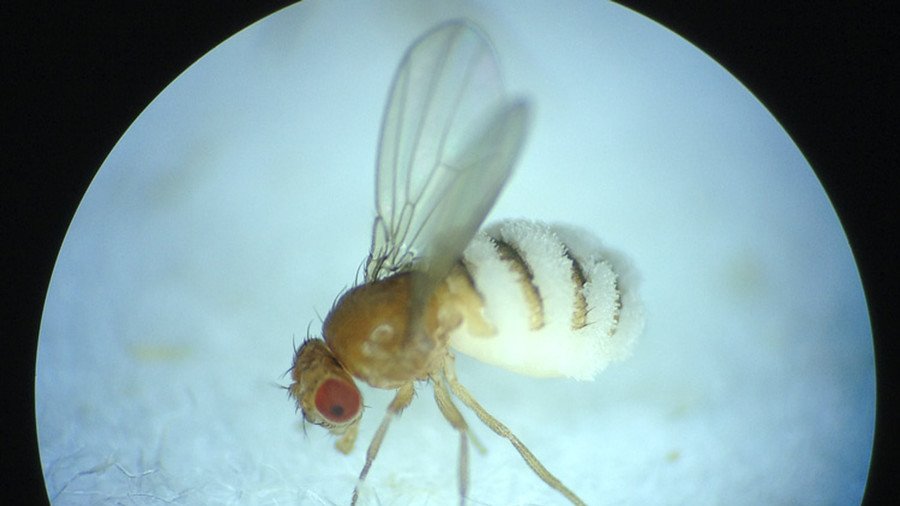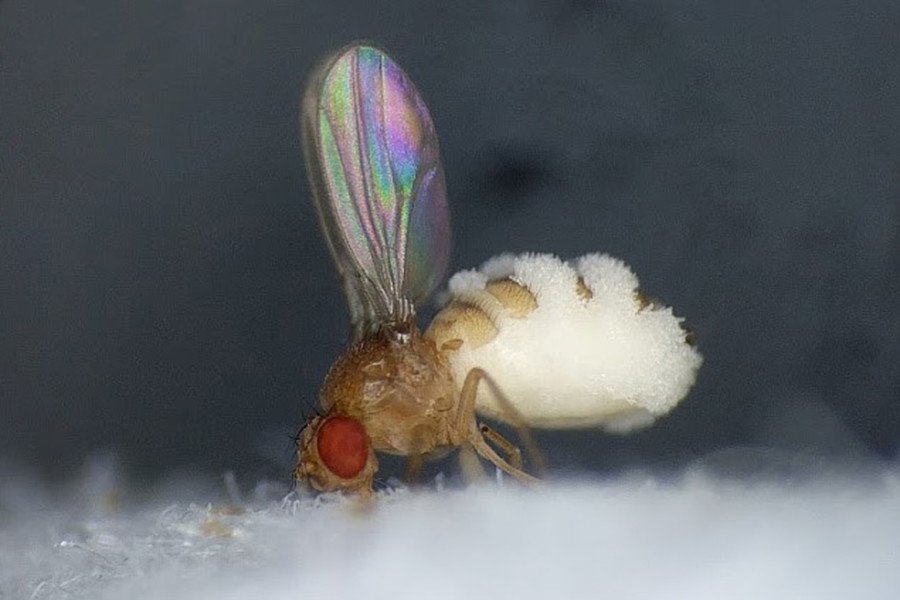‘Invasion of the body snatchers’: Mind-control fungus shows flies a gruesome end

Researchers have identified new elements of the ‘destroyer of insects’ – a fungus that behaves like a terrifying puppet-master killing fruit flies from the inside out.
The fungus, called Entomophthora muscae, was observed by scientists at the University of Berkeley as it infected a host of fruit flies, manipulating the creatures’ behavior and ultimately pushing them to their death.
Flies meet gruesome end under the influence of puppeteer #fungus — aka "destroyer of #insects" https://t.co/LiqucLtqj6 “I think of this as like the invasion of the body snatchers."#science#fungi@NSF@UCBLettersScipic.twitter.com/sHWF8Q6k0o
— UC Berkeley (@UCBerkeley) July 31, 2018
Study co-author Carolyn Elya initiated experiments after she found dead fruit flies lying around a rotting organic watermelon on her balcony and suspected the mind-control fungus may be responsible.
She responded by bringing home some laboratory fruit flies and putting them in reach of the deadly fungus before returning them to the lab for analysis, discovering that the fungus quickly invades its host’s nervous system – a feature which could be key to understanding how it influences the fly’s behavior.

While infiltrating the nervous system, it feeds off the fly’s fat stores as the insect goes about its daily routine. However, once all the fat has been consumed by the invading fungus, the fly’s behavior becomes abnormal – apparently as the fungus destroys its organs.
At this stage the fly starts spending more time on higher resting spots before raising its wings to an unnatural 90-degree angle and bringing on its own demise.
“I think of this as like the invasion of the body snatchers,” Elya said. According to Elya’s observations, the fungus holds off eating the fly’s brain and muscles until after its death.
Researchers at University of the Berkeley are now focusing their attention on uncovering how the fungus gets the fly to climb to its death. Details of the study have been published in journal eLife.
Think your friends would be interested? Share this story!














